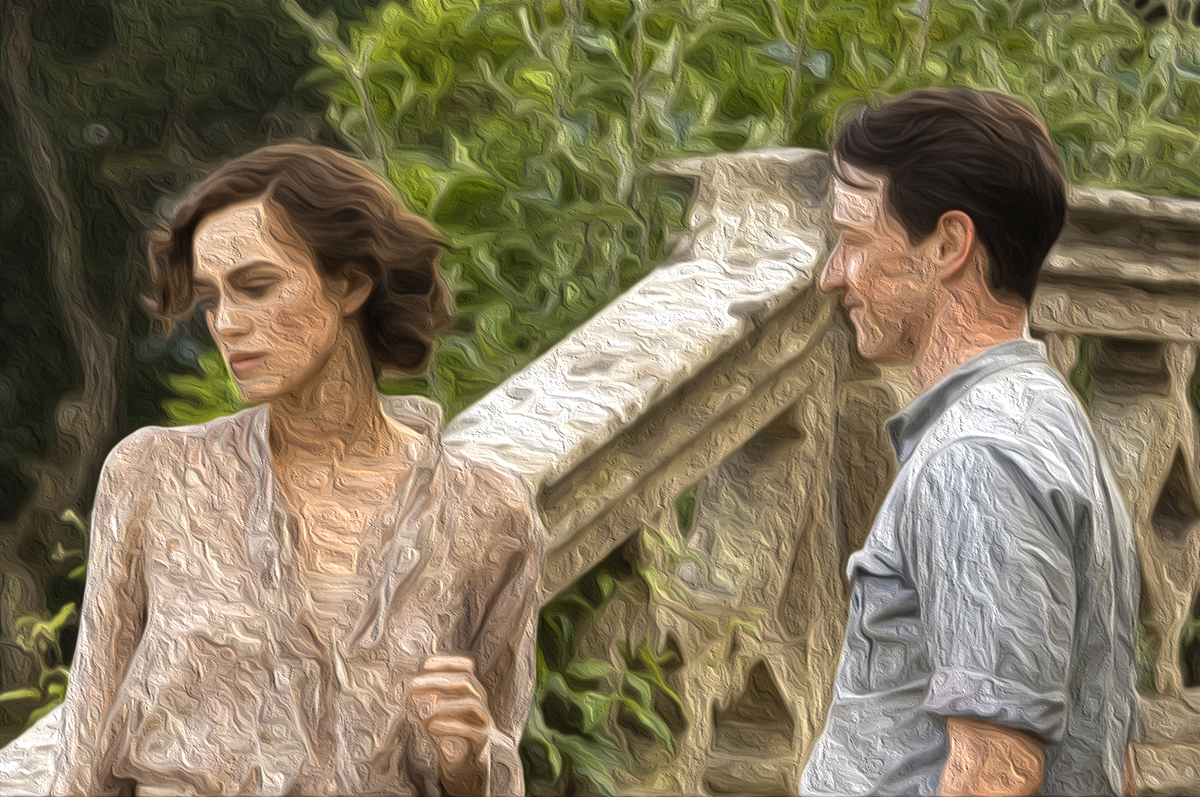
Possibly my favourite film of all time is Atonement, Joe Wright’s 2007 adaptation of my favourite book of all time by Ian McEwan. It is the stunningly heart-breaking tale of a young girl making an irreversible mistake that will ruin the lives of her sister and her lover forever. The story in itself is enough to make you love it, but I absolutely adore the way that Wright brings this novel to the screen.
If a young James McAvoy or Keira Knightley in THAT green dress isn’t enough to convince you, then perhaps you’ll be charmed by the scene on Dunkirk beach filmed in one continuous shot (Atonement walked so that 1917 could run) coupled with Dario Marianelli’s gorgeous score. If not, it’s hard to resist pretty much everything in between. Atonement’s imagery dramatizes the key themes of unreliable perspectives, incomplete truths, and the unrealistic innocence of childhood that become irretrievably tainted. Wright’s film focuses on minutiae – hands, letters, shrapnel, broken pieces. In doing so, it encapsulates the central idea of devastating consequences caused by ostensibly insignificant catalysts.
My favourite scene occurs by the fountain of the protagonists’, Cee (Keira Knightley) and Briony’s (Saoirse Ronan), family home. Robbie (James McAvoy) breaks a priceless vase – a symbol of the futility of fixing something that has been irreversibly broken – and Cee plunges into the fountain to retrieve the missing piece. Briony watches on from the window, removed from the action and perceiving it through the naïve lens of youthful innocence. She is completely disturbed and confused by the sexually charged exchange between her sister and Robbie. The scene plays out twice: once from the perspective of the two young lovers, and once from the warped perspective of the child, taking on a completely different meaning each time. Wright perfectly captures the idea of the unreliable narrator, which can be so easily created in a novel, but is, on film, a much more complex and subtle process.
The film goes on to play with ideas of meta-fiction or auto-fiction, and break your heart into several pieces and stamp on them while you watch on with eyes full of tears. But it’s worth every second of heartbreak. Atonement never for a second sacrifices style or substance. Instead, it expertly crafts a text that is fascinating to study in detail whilst sweeping you up in its emotions and story. Befitting the film’s key message, it’s one that changes you and stays with you long after you’ve stopped watching and crying.
Written for The Film Dispatch by Amy Strain.

